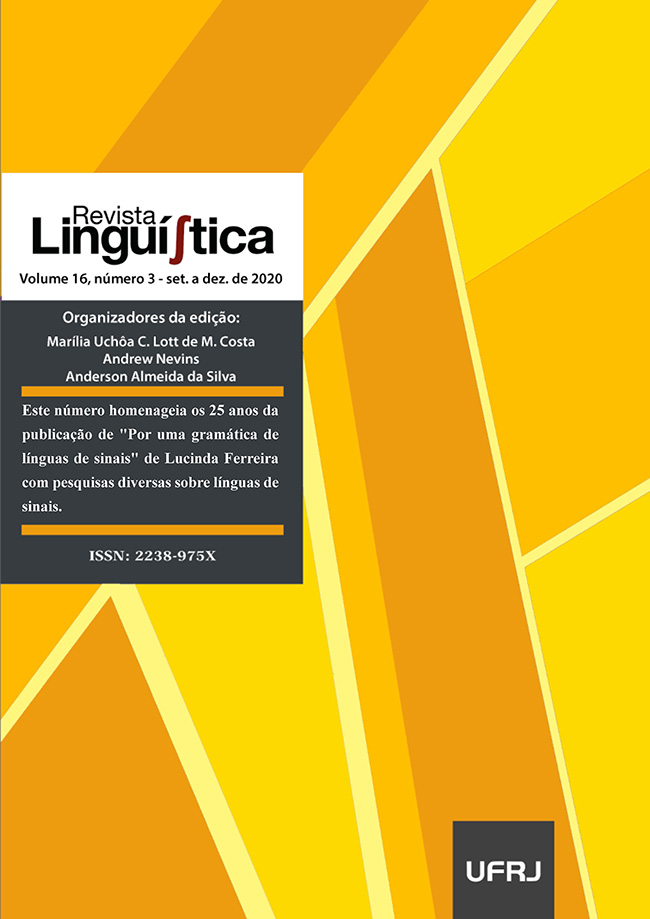It’s time for gesture in signs
DOI:
https://doi.org/10.31513/linguistica.2020.v16n3a36942Keywords:
ka’apor sign language, gesture studies, time, conceptual metaphorAbstract
This article deals with the spatial-visual temporal reference in different spoken-and-gesticulated and signed languages, starting from the discussion presented in Por uma gramática de línguas de sinais (FERREIRA, 1995). I present five microstudies. After introducing the questions (§2) and my data (§3), I trace an ethnographic profile of the Ka’apor sign language (LSK), mostly used by hearings with socio-spatial ties to the deaf. §4 describes the time reference in LSK and the Ka’apor language (Tupian). With primary data, I present the temporal signs and their relations with similar lexicalized units of the spoken language and its gestures. I classify three subsystems: lexicalization of daily periodicity by the image of sleep (§4.1); adverbials that indicate transitions of celestial luminosity (§4.2), and pointing to the trajectory of the stars as a lexicalization of the “hours” of the day (§4.3). In §5, I discuss the recurrence of the timing system by pointing explained in §4.3. The pointing subsystem is present in other languages spoken (§5.1). It is also recurrent in other sign languages of socio-cultural matrices other than institutional and Europeanized ones (§5.2). In §6, I compare the signs of the Neo-Brazilian sign language (Libras) with the temporal gestures of Neo-Brazilian Portuguese. I observe the sharing, between deaf and Brazilian listeners, of schemes underlying the target domain of time. In the light of these microstudies, I reconsider Ferreira (1983) (§7), emphasizing her objective of comparing languages of different semiotic modalities and different socio-cultural matrices (§8).
Downloads
Published
Issue
Section
License
Authors who publish in the Revista Linguí∫tica agree with the following terms:
The authors maintain their rights, ceding to the journal the right to first publication of the article, simultaneously submitted to a Creative Commons license permitting the sharing with third-parties of published content as long as it mentions the author and its first publication in the Revista Linguí∫tica.
Authors may enter into additional agreements for the non-exclusive distribution of their published work (for example, posting in online institutional or non-profit repositories, or book chapters) so long as they acknowledge its initial publication in the Revista Linguí∫tica.

The journal Revista Linguí∫tica is published by the Post-Graduate program in Linguistics of UFRJ and employs a Creative Commons - Attribution-NonCommercial 4.0 International (CC-BY-NC).









